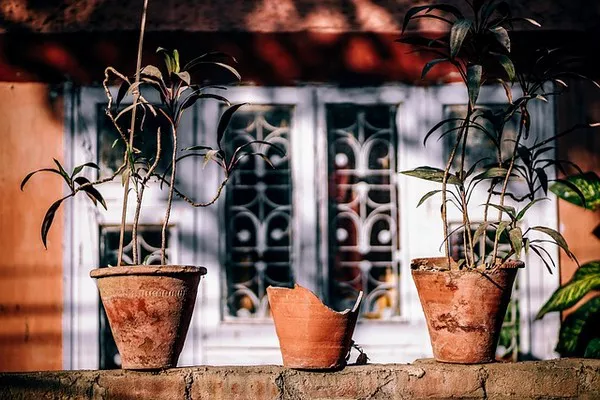The journey from a tiny seed to a mature plant is a fascinating process that sustains life on Earth. Seeds serve as the foundation of agriculture, gardening, and ecological restoration. Whether you are a gardener looking to save your favorite plant’s seeds or a farmer seeking to improve crop yield, understanding how to get seeds from plants is a valuable skill. In this comprehensive guide, we will explore the art and science of seed harvesting.
The Importance of Seed Harvesting
Seeds are the carriers of life and genetic diversity. They contain the genetic information necessary for the growth and development of a new plant. The process of seed harvesting is vital for several reasons:
Genetic Diversity: Seed harvesting allows for the preservation and propagation of diverse plant species and varieties, preventing the loss of valuable genetic traits.
Food Security: For agriculture, the ability to harvest and store seeds is essential for ensuring a consistent food supply.
Biodiversity Conservation: Seed harvesting plays a significant role in the restoration of native plant populations, crucial for maintaining ecosystems and supporting wildlife.
Cost Efficiency: Collecting and storing seeds from established plants can be more cost-effective than purchasing new seeds each season.
Understanding Seed Anatomy
Before delving into the techniques of seed harvesting, it is essential to understand the anatomy of a seed. A typical seed consists of the following components:
Seed Coat: The outer protective layer of the seed.
Embryo: The miniature plant within the seed.
Endosperm: The nutrient-rich tissue that nourishes the developing embryo.
Cotyledons: The first leaves that appear during germination, which provide initial nutrients to the seedling.
Radicle: The embryonic root of the seed.
Plumule: The embryonic shoot or stem of the seed.
Different plant species may have variations in seed anatomy, but these basic components are found in most seeds.
Choosing the Right Time for Harvesting
Timing is critical when it comes to seed harvesting. To maximize seed viability and quality, it is essential to know when to collect seeds from plants. Here are some guidelines:
Mature Seeds: Wait until the seeds are fully mature. This is typically indicated when the seed coat changes color or hardens, and the plant starts to naturally drop seeds.
Dry Weather: Harvest seeds during dry weather to prevent mold and fungal growth during storage.
Early Morning: Collect seeds early in the morning when the moisture content is lower, reducing the risk of mold and disease.
Avoid Overripeness: Don’t wait too long to harvest; overripe seeds may have reduced viability.
Common Seed Harvesting Techniques
Hand Harvesting: This method involves manually collecting seeds from plants. It is suitable for a wide range of plant types, from flowers to vegetables. Use scissors, pruners, or your fingers to gently remove seeds from the plant.
Shaking and Beating: For plants with seed pods or capsules, gently shake or beat the plant to release the seeds into a container. This method is often used for species like marigolds and poppies.
Winnowing: Winnowing is a process of separating seeds from chaff, husks, or other debris. Typically, you toss the harvested material into the air, allowing the wind to carry away the lighter chaff while the seeds fall back into a container.
Bagging: When dealing with plants that have seeds that naturally disperse when ripe, consider using small bags or envelopes to capture the seeds before they fall.
Cutting and Collecting: For plants like grasses or grains, use a sickle or scythe to cut the seed heads and collect them in bundles.
Seed Cleaning and Storage
Once you’ve harvested the seeds, it’s essential to clean and store them properly to maintain their viability and quality. Here are the steps to follow:
Cleaning: Remove any debris, chaff, or non-seed material from the harvested seeds. You can use screens, sieves, or your fingers to separate seeds from unwanted matter.
Drying: Allow the cleaned seeds to air dry thoroughly. Proper drying is crucial to prevent mold growth during storage. Spread the seeds in a single layer on a clean, dry surface in a well-ventilated area.
Labeling: Label each batch of seeds with the plant’s name, date of collection, and any other relevant information. This ensures you can identify and track your seeds accurately.
Storage: Store the dried seeds in airtight containers like glass jars or resealable plastic bags. Keep them in a cool, dark, and dry place to maintain their viability for an extended period.
Germination Testing: Periodically test a small sample of stored seeds to check their viability. This will help you determine if the seeds are still viable and suitable for planting.
Conclusion
Seed harvesting is both an art and a science. It requires a keen understanding of plant biology,as well as practical skills to collect, clean, and store seeds effectively. Whether you are a gardener, farmer, or conservationist, mastering the art of seed harvesting is a valuable skill that contributes to genetic diversity, food security, and biodiversity conservation. By following the guidelines outlined in this comprehensive guide, you can ensure the success of your seed harvesting endeavors and contribute to the sustainable cultivation and preservation of plant life on our planet.


